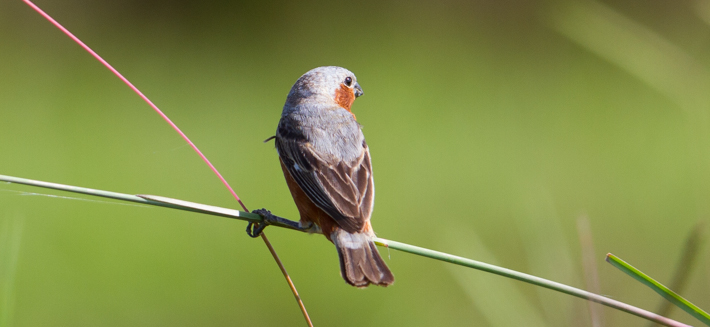
Strange Tails
We're delighted to have a strong population of strange-tailed tyrants at the reserve. So much so that we've adopted these beautiful and endangered birds as the symbol of the Trust
The growing diversity of the animals of Reserva Don Luis is a fresh source of delight every time we return. We don't play favourites, but it's impossible not to engage more with some of our more conspicuous guests. One of these is the strange-tailed tyrant. The male is stoic in his tolerance of one of nature's strangest - and it would seem least practical - adaptations. He's willing to suffer to be beautiful, and somehow manages to fly with tail feathers that were surely designed for a bird three times his size.
We love his perseverance; his resolution to succeed against challenge, and his ability to prove that anything is possible. He's appearing in growing numbers on the Reserva Do Luis, and his success has become an allegory for, and a symbol of, our own.
When we started the process of updating and redesigning our website, we wanted to adopt an image that symbolised our aims and our challenges. This brave little flycatcher, with his indomitable character, was the perfect choice.
The logo is a stylised profile of a male tyrant, silhouetted against the sunrise. We coloured the sun the blue of the Argentinian flag in honour of this country's beauty, its climate and the breathtaking span of magnificent animals that it nurtures.

Bat Research
Our bat team is conducting bat research both in the Ibera Marshes and in other provinces. We are especially concentrating on Misiones at the moment where we find the largest bat in Argentina, Chrotopterus auriitus and Myotis ruber, two species that we are researching.

Rufus-Rumped Seedeater
Sporophila hypo chroma
We occasionally see the Rufous-rumped seedeater at our reserve. This photo was taken in November 2016 when a juvenile was also seen. The previous time was in March 2014 in the south accompanied by a Chestnut Seedeater. They are considered Near Threatened in the IUCN redlist due to a small range, habitat loss and exploitation for the wild cage trade.
This seedeater is similar to the others in the area, is only about 9cm in length and it feeds on grass seeds in particular in marshy aeas or near water. Its favourite grass seems to be Paspalum.
The ventral side and rump are rufus red. It has a pale grey crown which extends down to its upper back. Wings are grey/brown with several bars and the tail which is slightly swallow tailed is plumbeous.
The female is similar to other Sporophila females, it appears to be only the male that defines these seedeating species.

